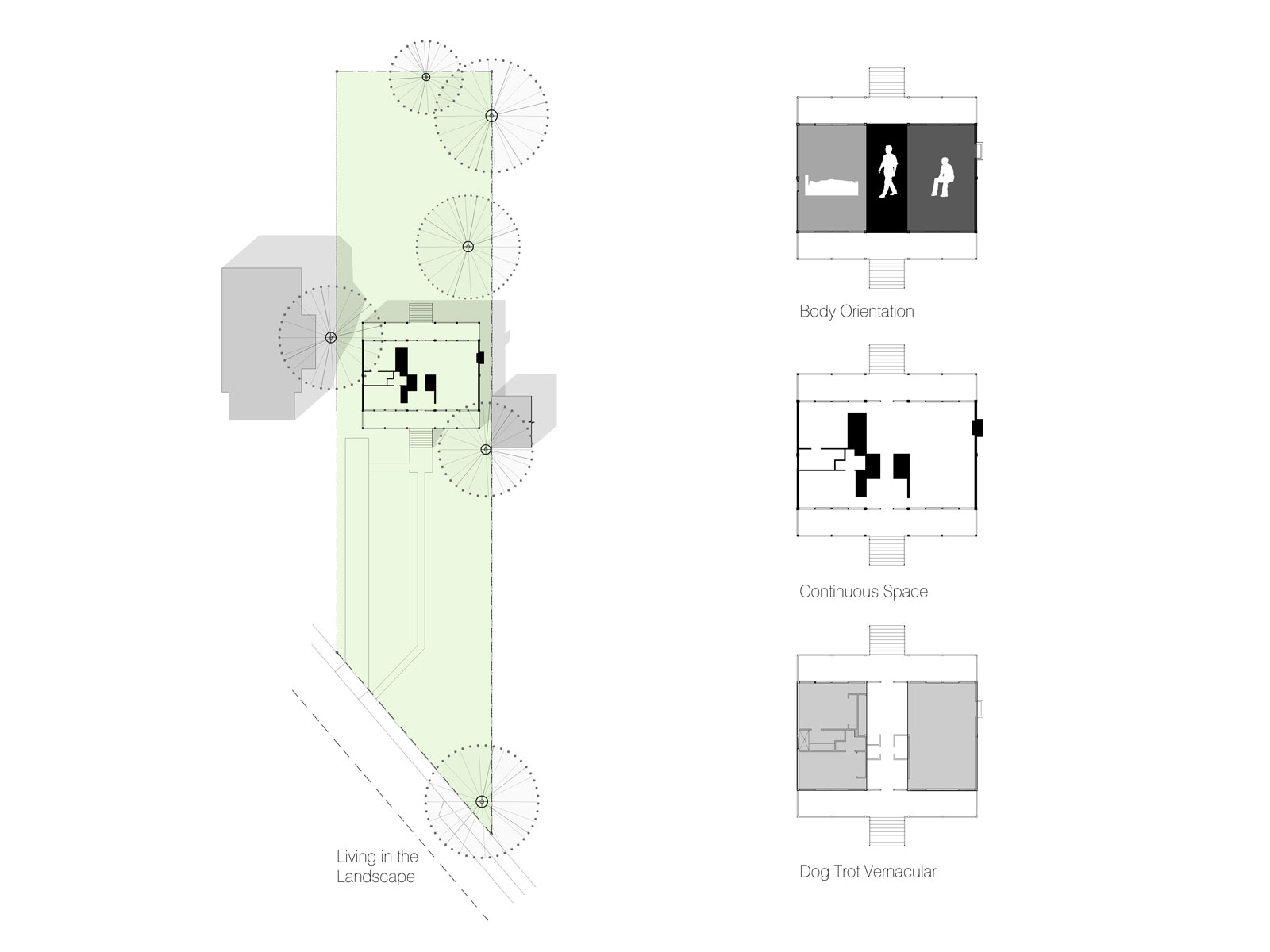LOCATION: MIAMI, FLORIDA
CLIENT: JACOB AND MELISSA BRILLHART
SIZE: 1500 sf
STATUS: BUILT
BEST SINGLE FAMILY HOUSE, ARCHITECTS’ NEWSPAPER – 2015
AIA FLORIDA HONOR AWARD 2015
AIA MIAMI HONOR AWARD 2014
NEW YORK TIMES FEATURE – DEC 2014
WOOD DESIGN AWARD, WOOD DESIGN & BUILDING MAGAZINE – 2014
BBC TWO – THE WORLD’S MOST EXTRAORDINARY HOMES – COMING TO NETFLIX 2018
The design for our house relies on a back-to-the-basics approach – specifically studying old architectural models that care about good form but are also good for something. Each design decision was organized around four central questions that challenge the culture for building big: what is necessary; how can we minimize our impact on the earth; how do we respect the context of the neighborhood; and what can we really build?
Some answers came from a place with which we are already intimately familiar – the seemingly forgotten American Vernacular, and more specifically, the Dog Trot, which for well over a century, has been a dominant image representing Florida Cracker architecture. The small, simple, and practical building is both modest and rich in cultural meaning. It attempts to maximize efficiency, space, and energy; relies on vernacular building materials; and celebrates the balmy breezes.
The principles of Tropical Modernism also offered direction. The architects building in South Florida’s postwar period turned to local landscape, climate and materials to inform their designs, marrying building traditions with passive systems, new technologies, and innovative construction techniques. In that same spirit, we sought an alternative to the use of concrete and concrete only, instead exploring steel and glass as the superstructure. As a result, we wasted fewer materials, simplified the assembly, and reduced the cost and time of construction, all the while allowing for increased cross ventilation and a heightened sense of living within the landscape.
Elevated five feet off the ground, the project includes 100 feet of uninterrupted glass – 50 feet spanning the full length of both the front and back sides of the house, with four sets of sliding glass doors that allow the house to be entirely open when desired. The house also includes 800 square feet of outdoor living space, with both front and back porches and shutters along the front façade for added privacy and protection against the elements. These details, and the position of the house, which is at the center of a 330-foot long lot, allow the house to meld seamlessly with the site’s dense and lush native landscaping. With interior and exterior spaces fused together, the experience is that of a floating tropical refuge.
Insulation/Glass
With today’s advances in thermal qualities of glass and insulation we were able to use the Tropical modern concepts alongside current Florida Building Code requirements. To meet and/or exceed the required R-Values, we included insulation on all six sides (icynene and rigid insulation); as well as 9/16″ thick thermal glass. We also had to design new assemblies in the process. For one, the new code just came out with requirements to insulate the floor if elevated. As this is a new requirement — we had to develop an entirely new floor detail – creating a sandwich with plywood underneath and on top of a layer of rigid insulation. Meanwhile, in order to achieve the R-Value on the roof and accommodate a slight slope, we designed a similar but inverse concept – installing tapered rigid insulation on the roof, with a layer of plywood underneath followed by icynine below.
The R-value is a measure of thermal resistance used in the building and construction industry. It is expressed as the thickness of the material divided by the thermal conductivity. The higher the number, the better the building insulation’s effectiveness. The design for the roof insulation resulted in a R-Value that exceeded what was required.
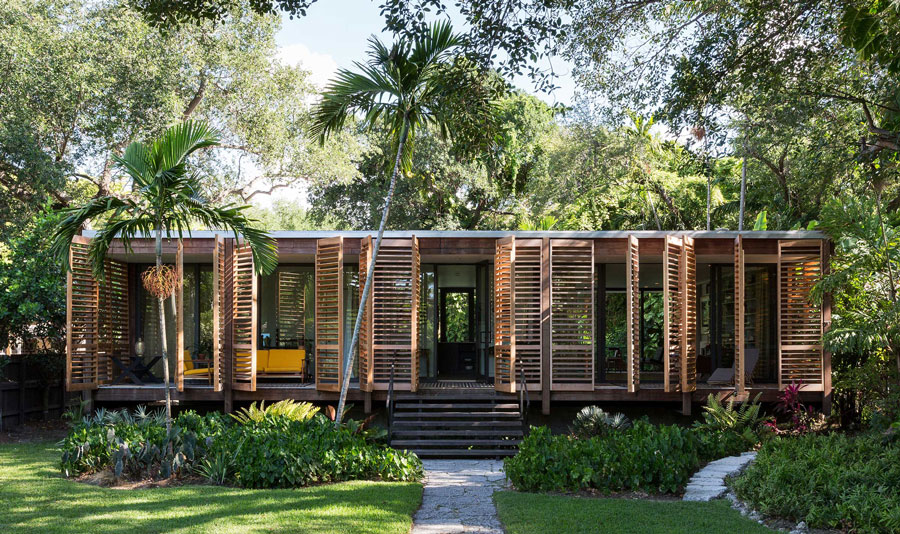
Front Façade_Photo Credit: Claudia Uribe

Rear Facade. Photo Credit: Claudia Uribe
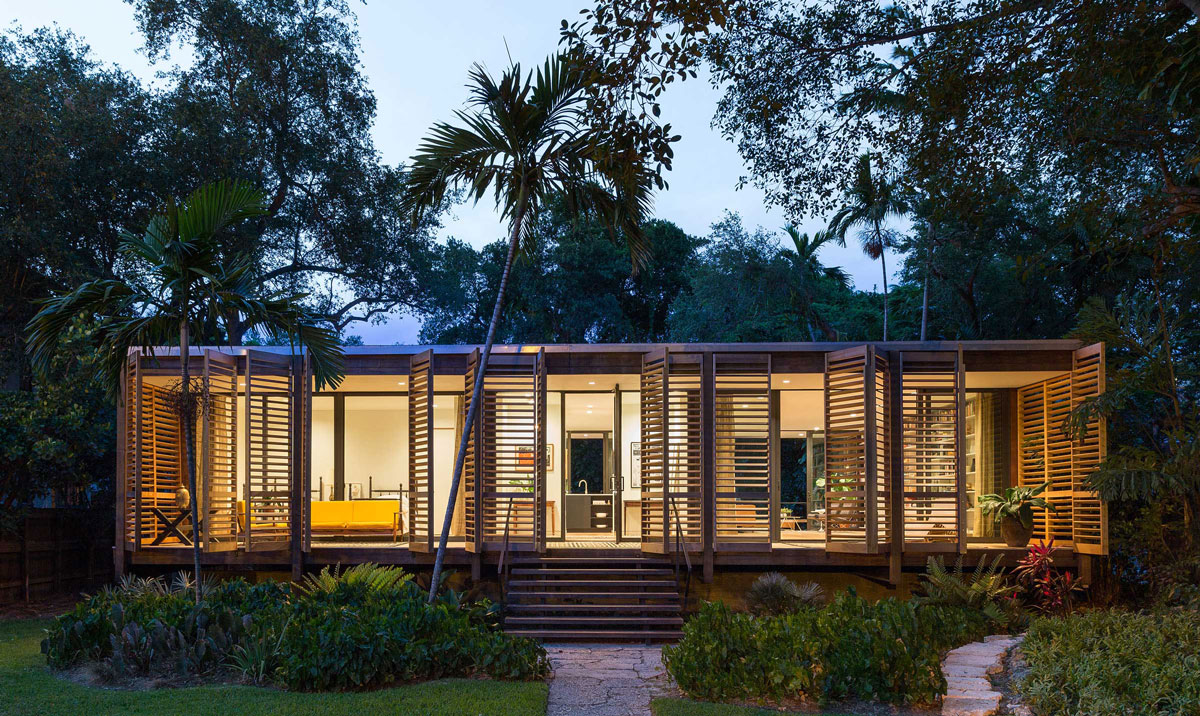
Front Façade_Photo Credit: Claudia Uribe

Rear Facade. Photo Credit: Claudia Uribe

Photo Credit: Claudia Uribe
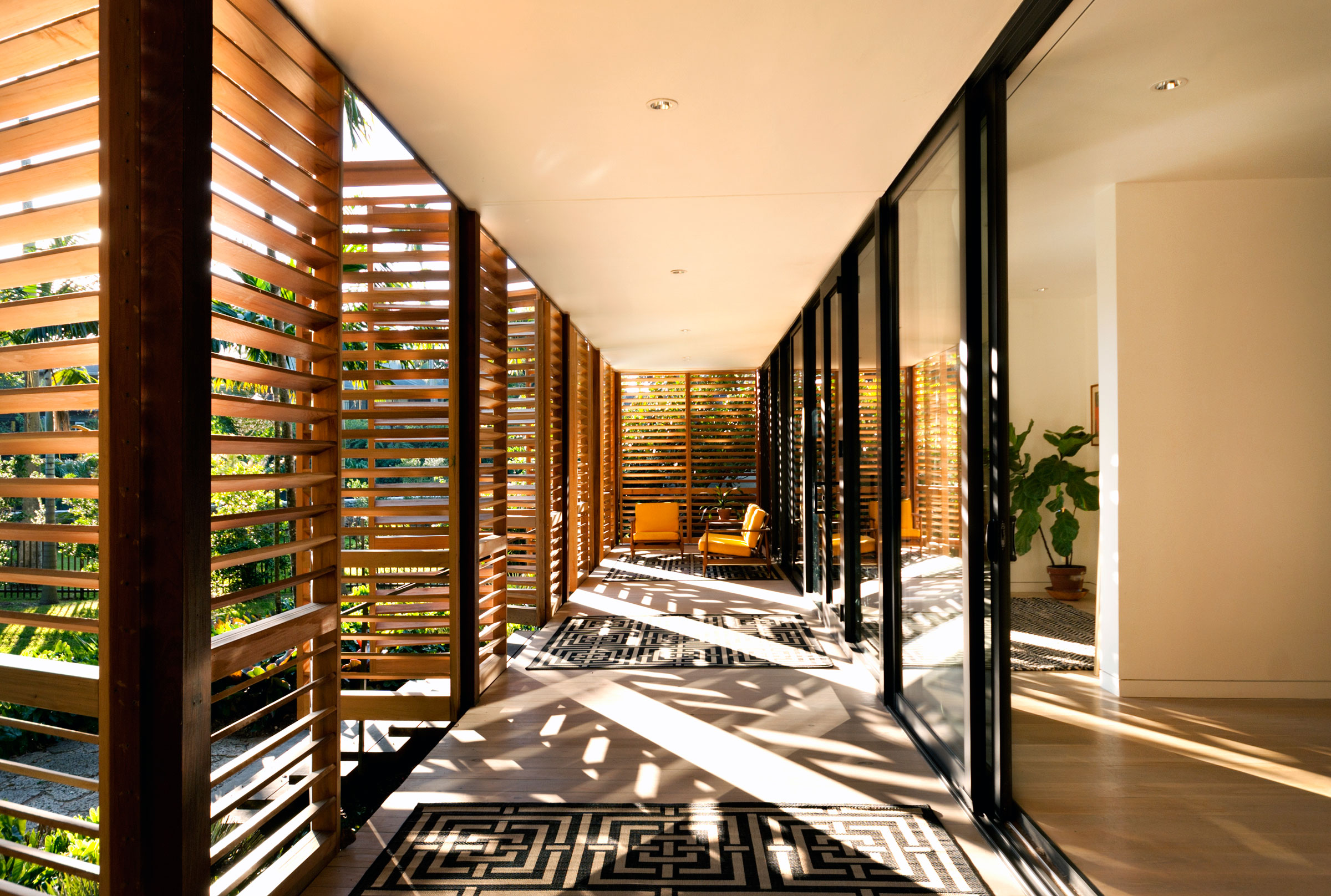
View of porch showing relationship between indoor and outdoor. Photo Credit: Stefani Fachini
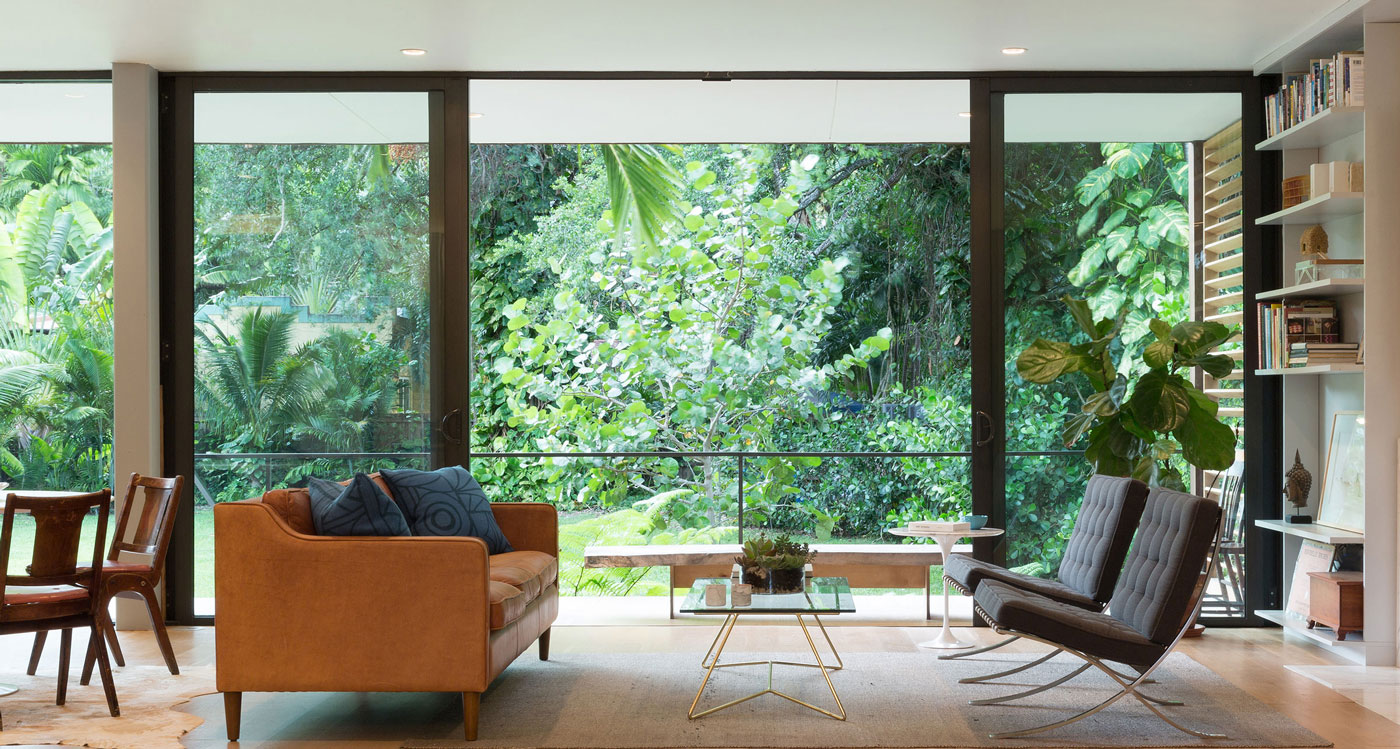
Interior View_Photo Credit: Claudia Uribe
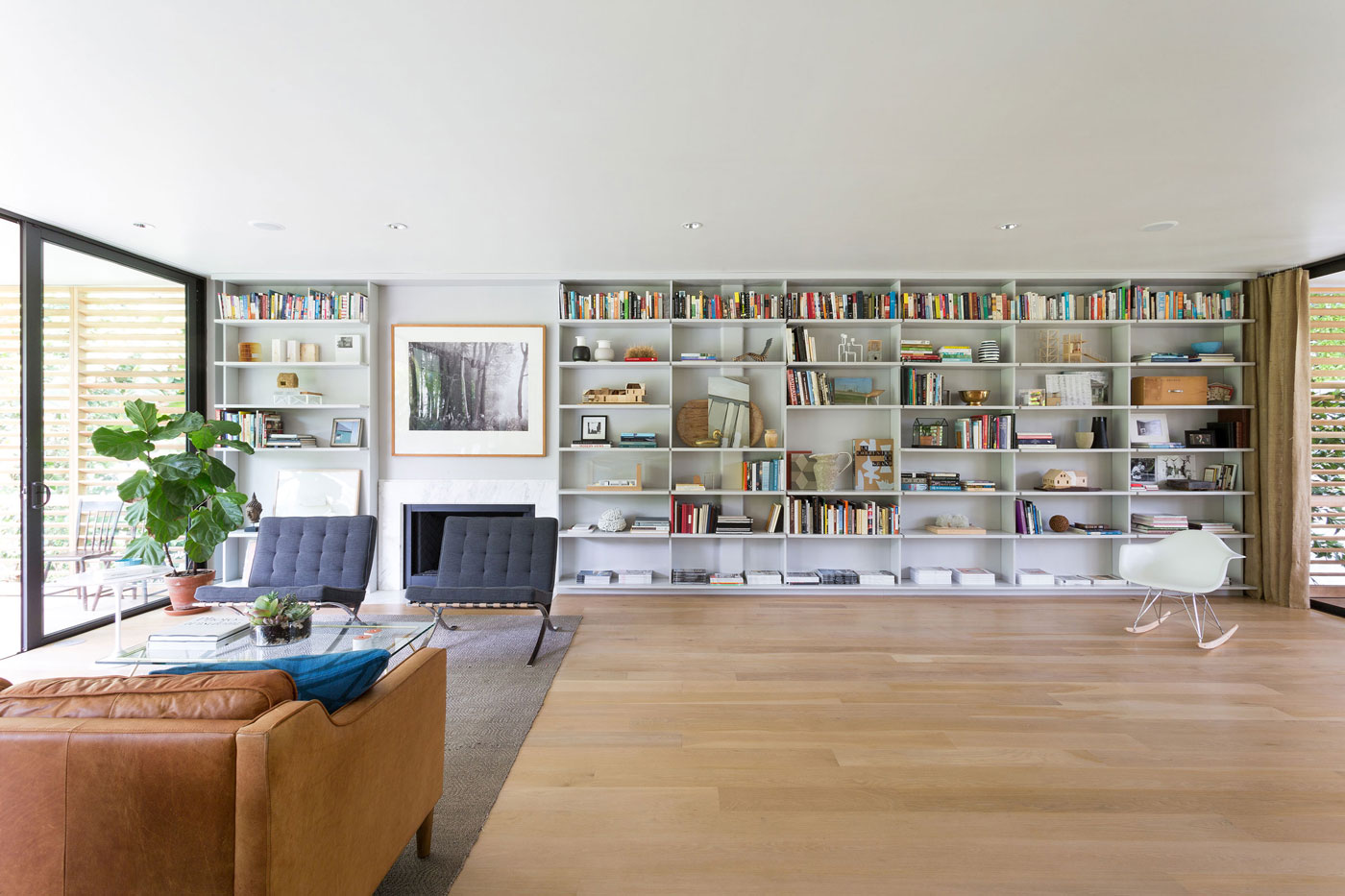
Interior View_Photo Credit: Claudia Uribe
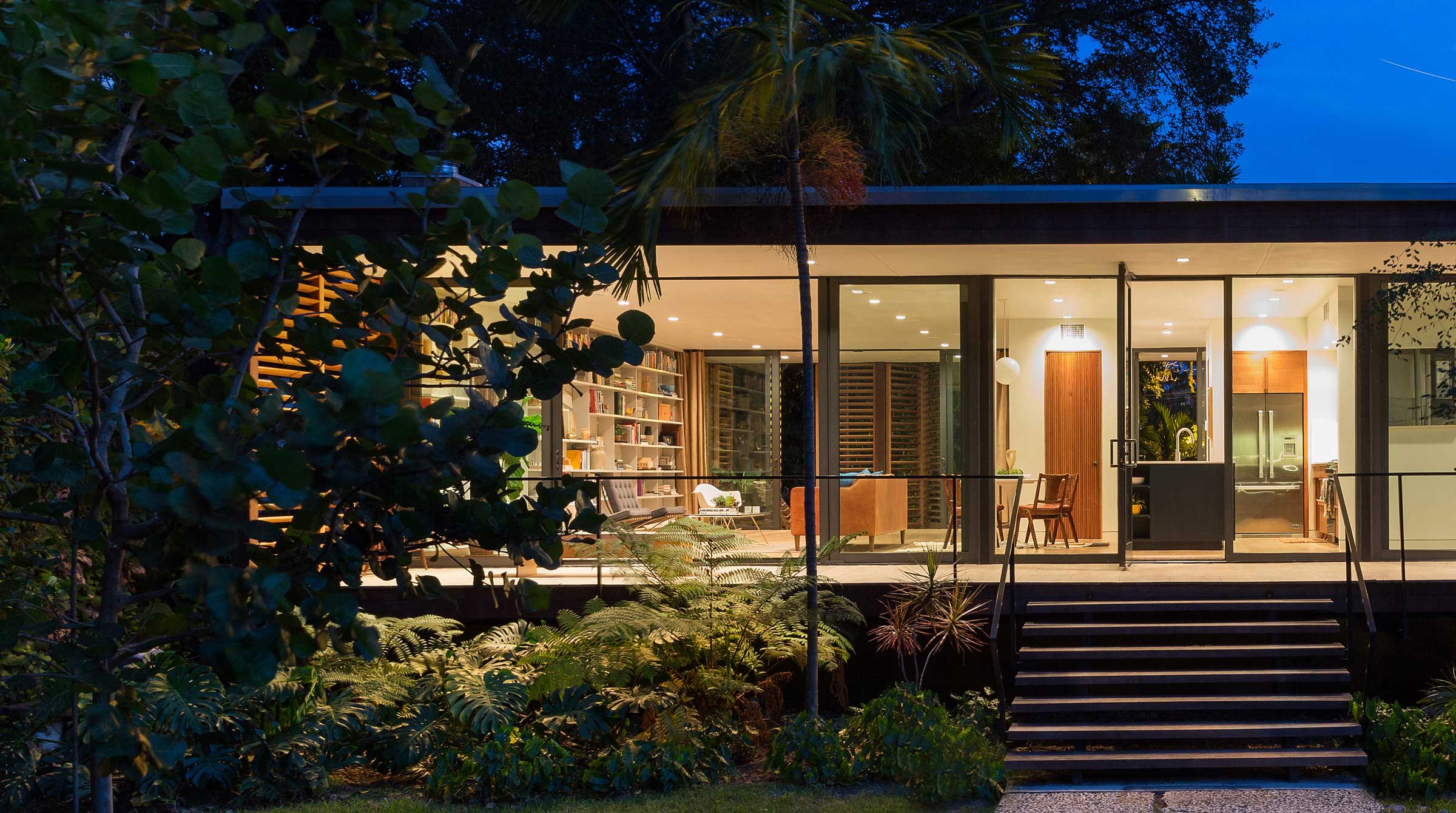
View Looking Through House_Photo Credit: Claudia Uribe

Kitchen. Photo Credit: Claudia Uribe

Kitchen Views. Photo Credits: Bruce Buck (left); Stefani Fachini (right)

Bedroom View. Photo Credit: Claudia Uribe
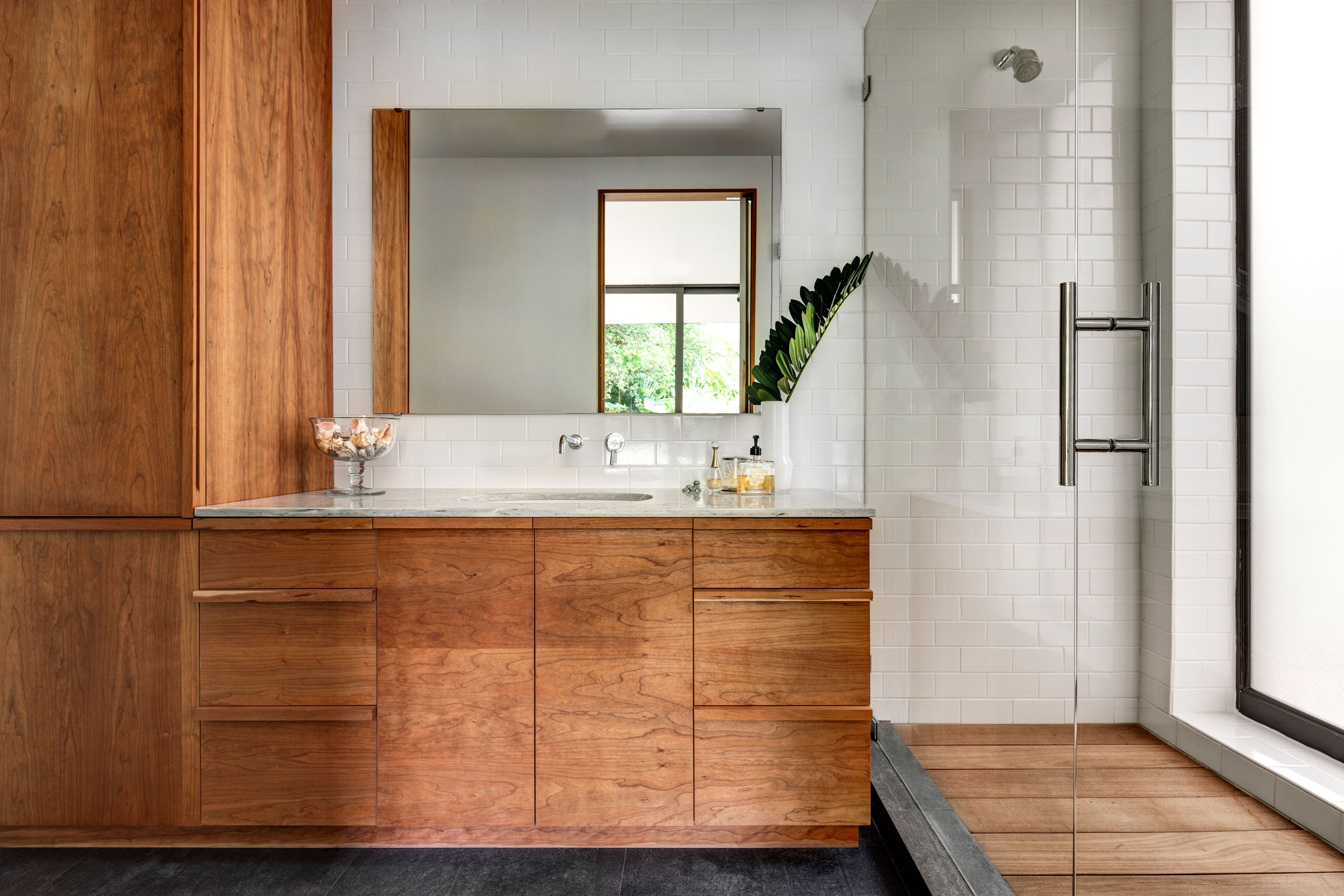
Master Bath_Photo Credit: Bruce Buck
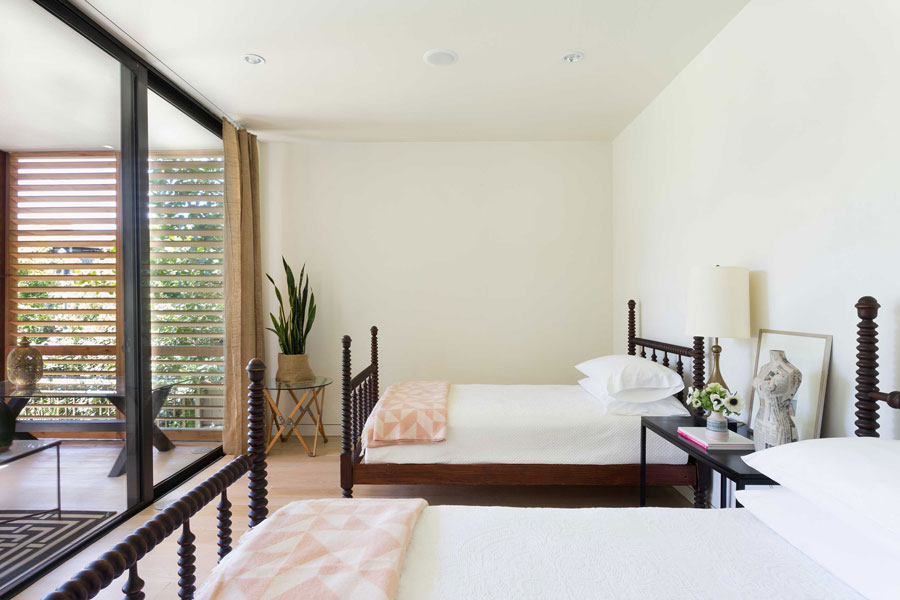
Bedroom 1_Photo Credit: Claudia Uribe
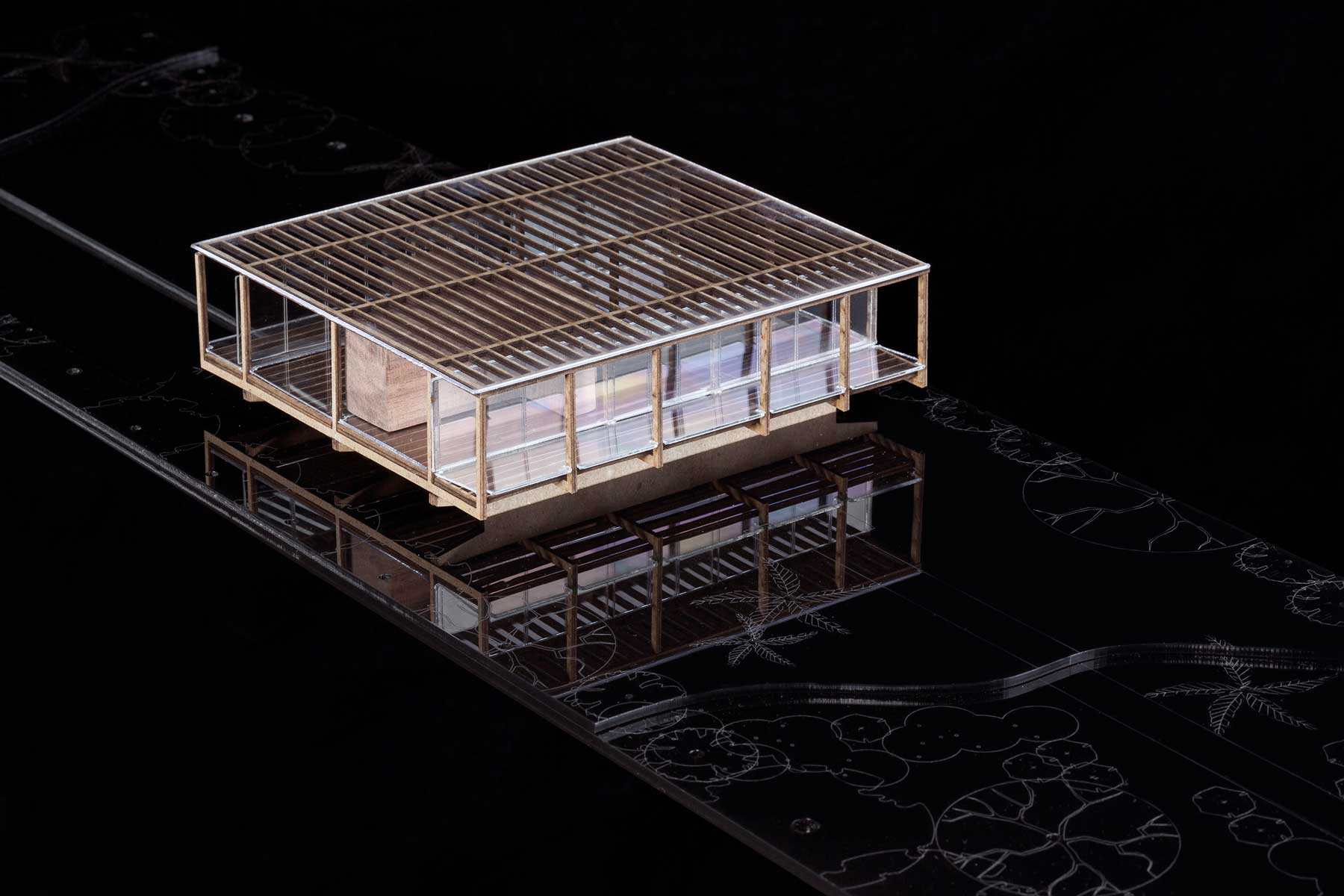
Concept Model
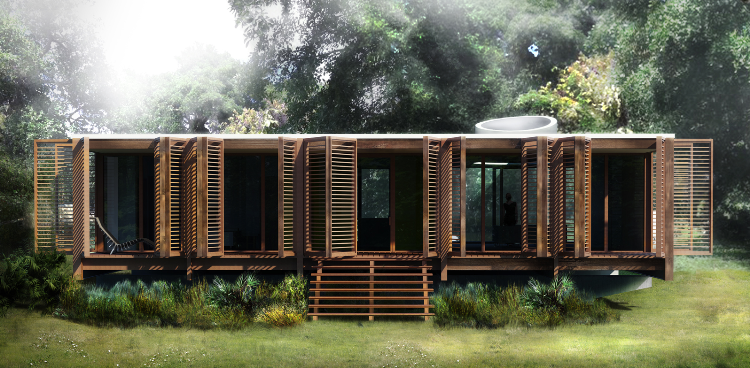
Rendering
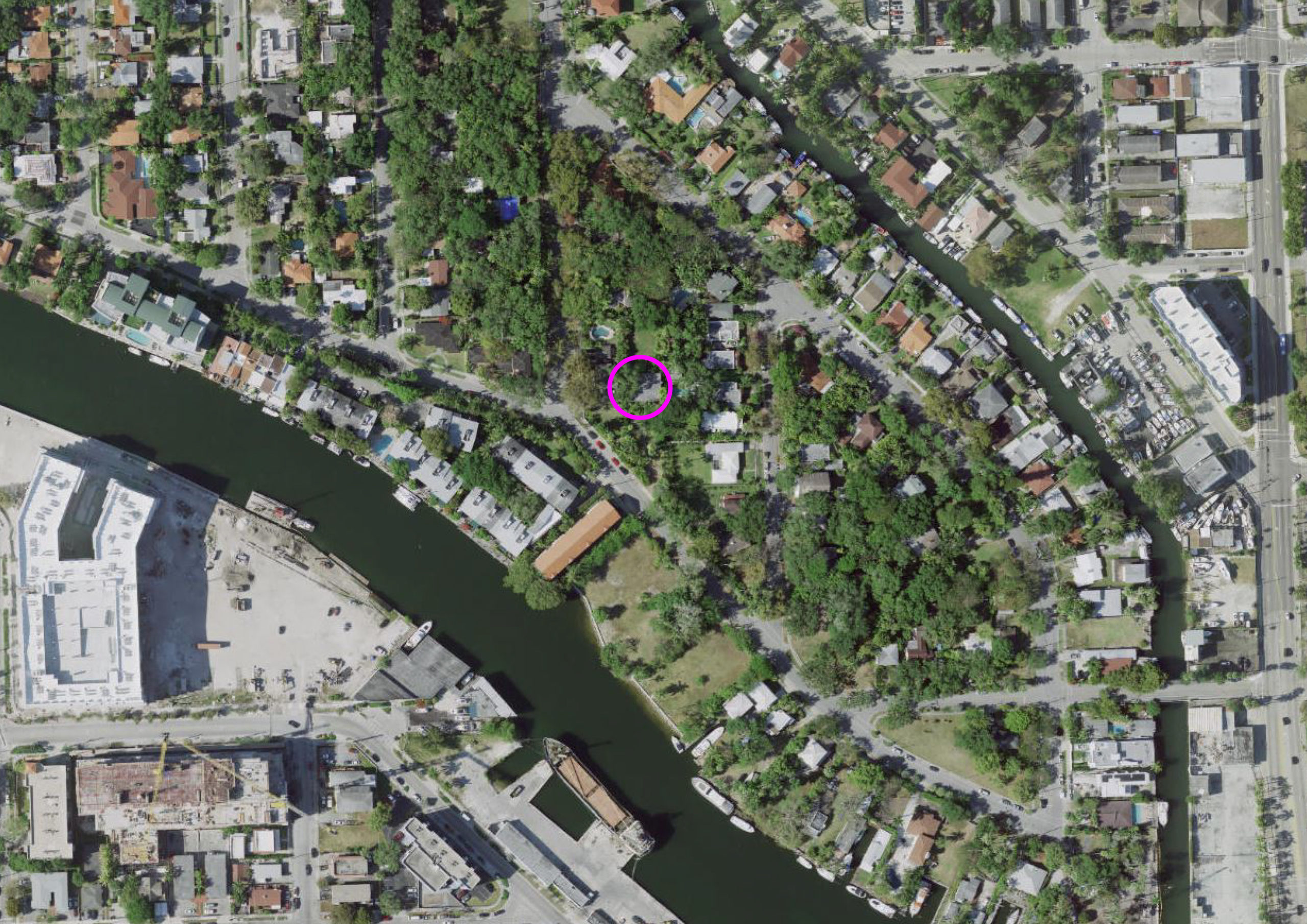
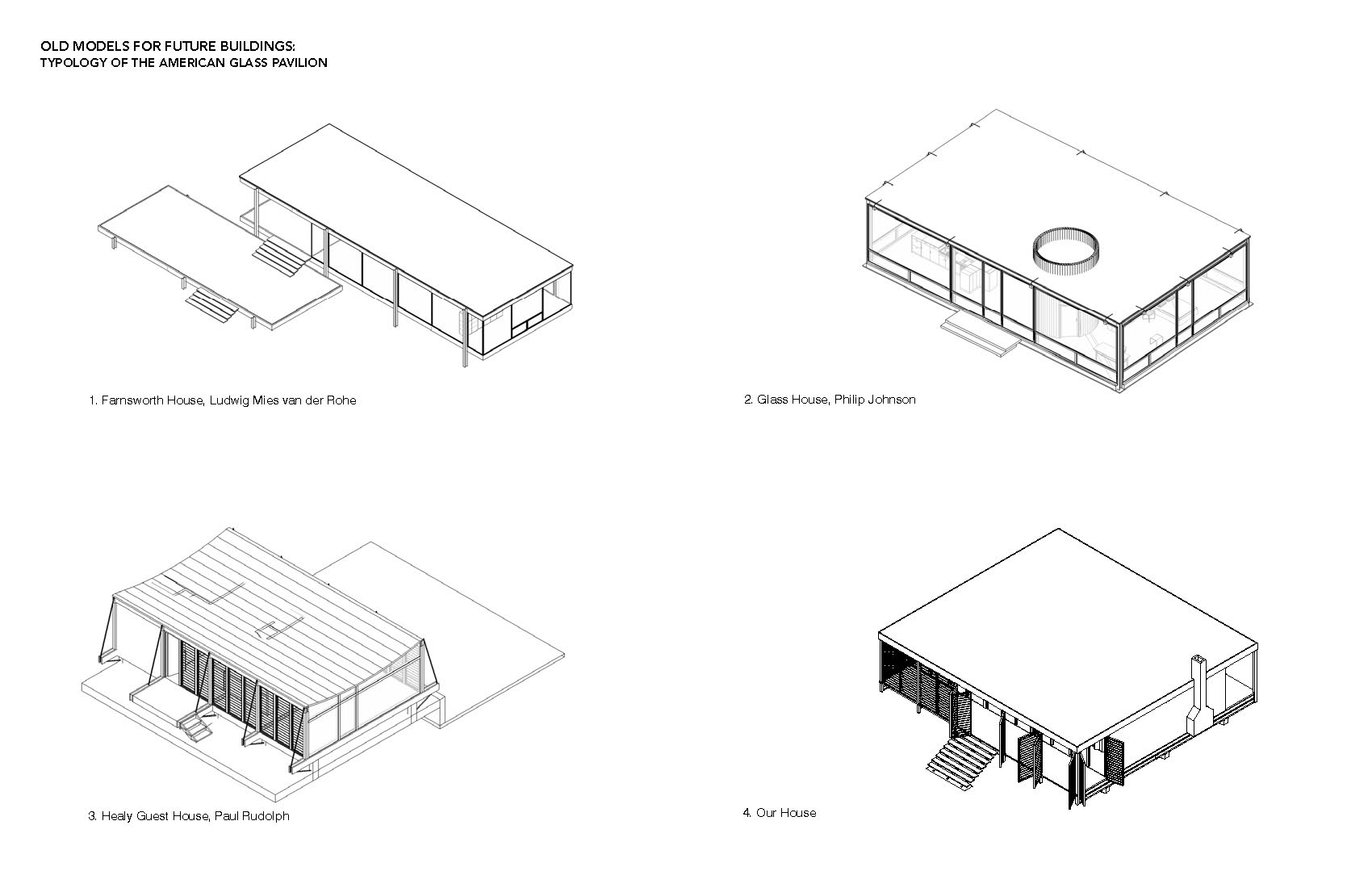
American Glass Pavilion Typology
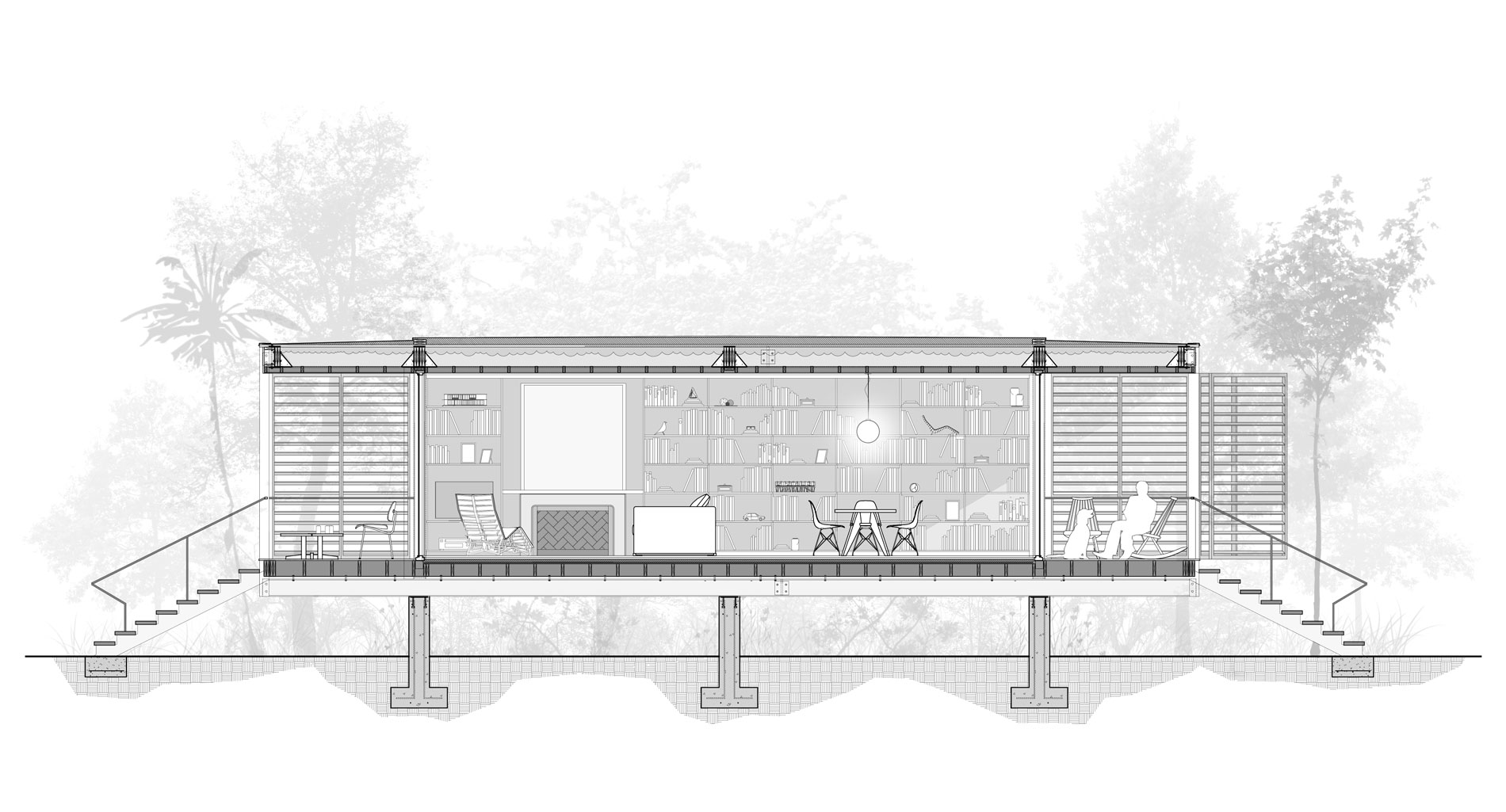
Section
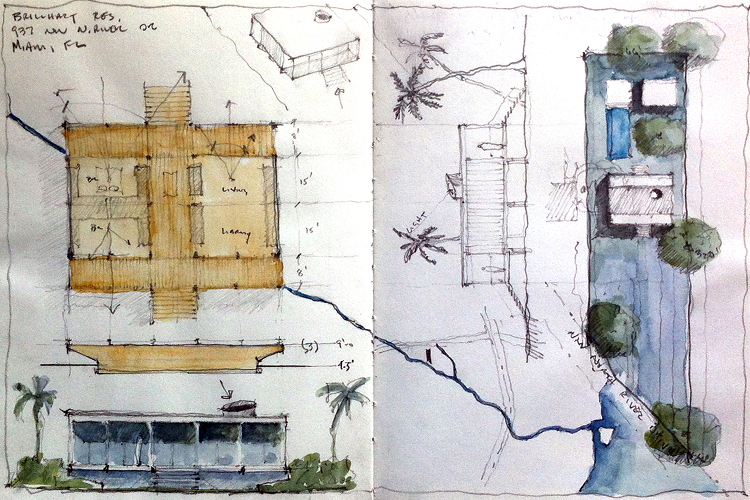
Design Sketch

Plan
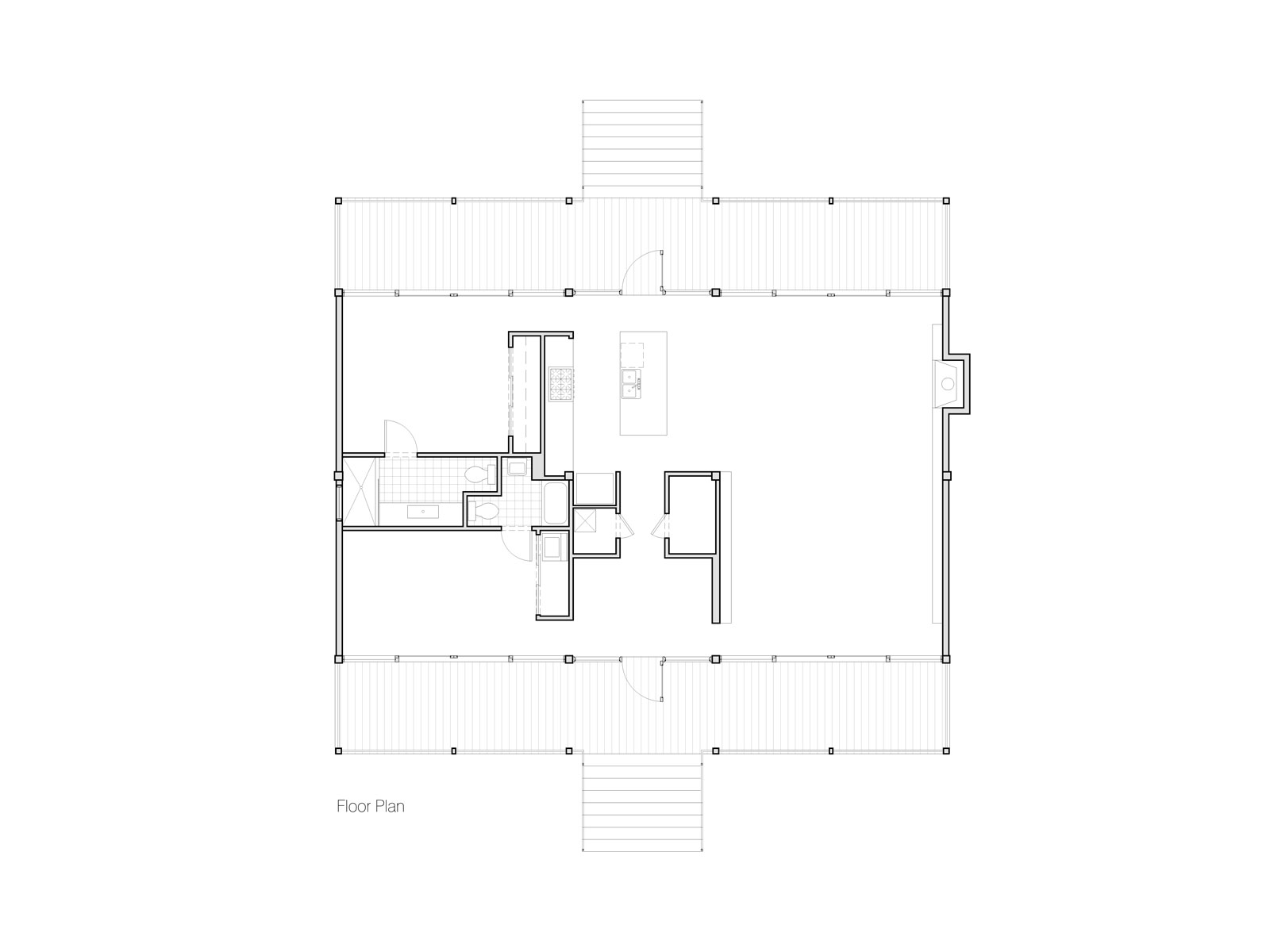
Floor Plan
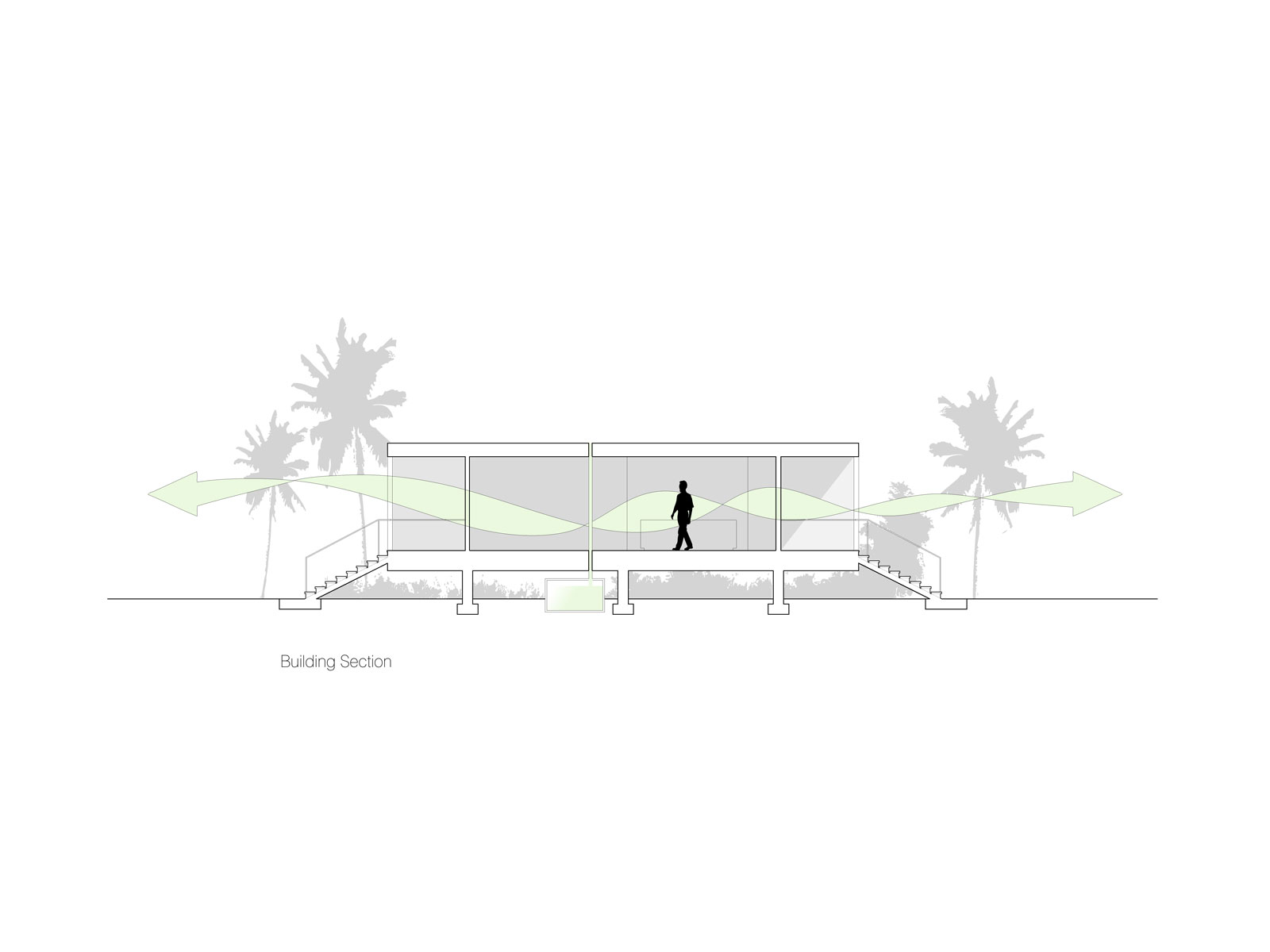
Sustainability Features
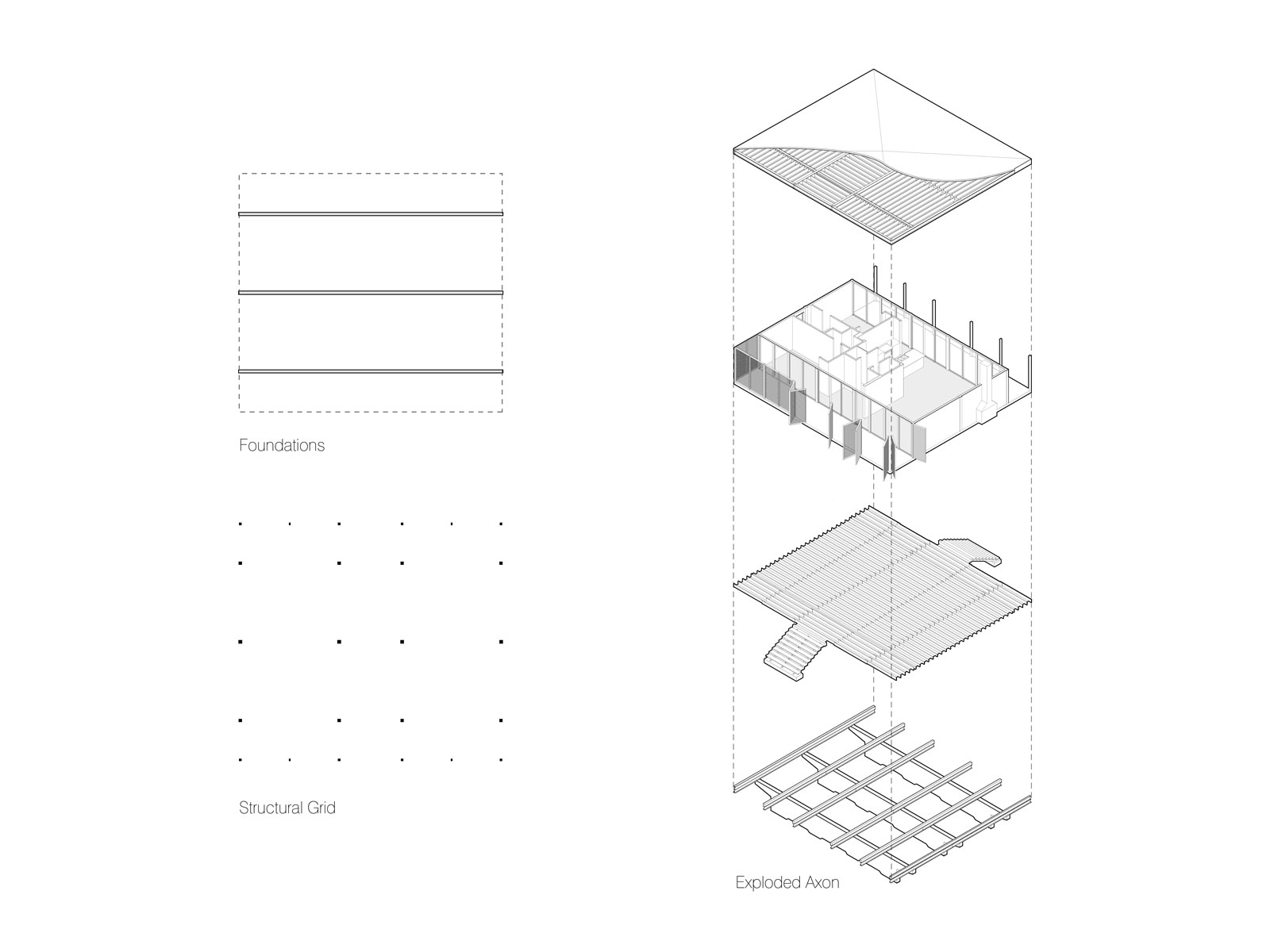
Structural Diagrams
